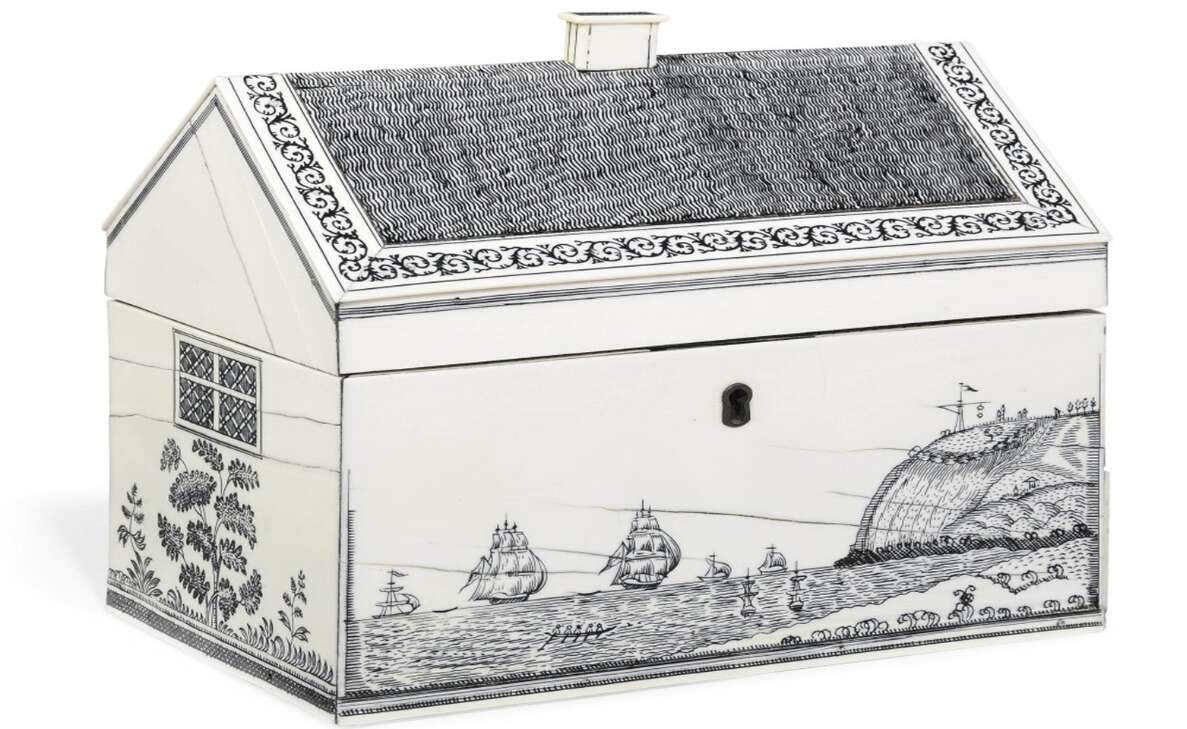

Ivory Tea Caddy, Vizagapatam scene engraved, 1775
Visakhapatnam, once known as Vizagapatam, is an urban jungle that once flourished with expert craftsmen and their beautifully handcrafted arts. The City of Destiny’s beloved sons and daughters highlighted their hometown on the world map with their artistry and crafts, which remain priceless antiques today. One such celebrated art pieces that originated from Vizag were the tea caddies, a precious box that well-off families widely used. On the occasion of World Heritage Week, John Castellas, a Vizag heritage enthusiast and aficionado, shares how the locally-made tea caddies rose to fame in the European markets.
Also read: The first wings over Vizag: An ode to the city’s rich history
The Tea Caddy was a lockable container to store the precious commodity – tea. The word caddy derives from the common weight ”’catty‘’ used in South East Asia for trade in the 18th
century and the Madras Presidency Teligana (Telugu) word pette, meaning a box. The Madras Almanac of 1813 describes the catty’s equivalents in India, Siam, China, Malacca and Batavia as varying from 1 Pound 4 Ounces to 1 Pound 6 Ounces, meaning a weight equivalent of about half a kilogram. In the late 18th century, the contents of a tea caddy were likely to have been more valuable than the box itself, and Vizag was the source of tea caddy manufacture.While more widely drunk, tea was still expensive, and the mark of a fashionable household was offering guests tea in costly Chinese porcelain cups. Tea was first exported from China and then India in porcelain or terracotta jars, then tea chests, but smaller, decorative caddies became common for home use as craftsmen saw an opportunity to make decorative caddies to hold this valuable commodity.
Some caddies could be locked to ensure that no one helped themselves to the contents, and they were then put on display in the homes of the well-to-do. Caddies were made in all types of materials, including silver and ivory, tortoiseshell and many types of exotic wood.
In the European antique market, ivory caddies sell for about £5,000 for simple examples, rising in price if they also have added decorative features, scenes, initials or motifs. The most expensive ivory caddies have sold for £10,000 to £20,000.
The artisans of the Kamsali caste, who adapted their goldsmith skills to ivory inlay and applied it to western furniture forms, were employed at Ivory Works in Vizag. It is not known how many workshops existed, but they were concentrated on Beach Road. The Maharajas of Vizianagaram, Kurpum and Bobbilli owned workshops and gifted works from their craftsmen to members of the East India Company and royalty in England. The craftsmen sometimes left their labels on the ivory work they crafted. Rajah G.N. Gajapati Rao of Vizagapatam exhibited such work at the Exhibition of Native Fine and Industrial Art, held at Simla in 1881and it contained a card –Name of Chief Artisan L. Venkatadas; Exhibitor the Rajah G. N. Gajapati Rao
of Vizagapatam.Prize-winning exhibits at Industrial Exhibitions in Calcutta, Delhi and London enhanced the demand for Vizagapatam work, leading to manufacturing and exporting in large quantities for the European market. Consignments were in great demand in response to newspaper advertisements by dealers.
How tastes have changed. Tea is now so widely consumed that storage in a caddy is uncommon, yet the value of “Made in Vizag” tea caddies has skyrocketed. So enjoy your next cup of tea, knowing that it is more affordable than a Vizagapatam Tea Caddy.
Written by John Castellas, whose family belonged to Vizag for five generations. Educated at St Aloysius, migrated to Melbourne, Australia in 1966, former General Manager of Engineering at Boeing & Qantas Airways, in retirement, Lecturers in Aviation Management at Swinburne University and is a Vizag heritage enthusiast and aficionado.
Stay tuned to Yo! Vizag website and Instagram for more interesting heritage stories.
This post was last modified on 25/11/2022 1:08 am
Entertainment comes in many forms. It might be in the form of a thrilling video…
Whether you're an early bird or an early grump, it goes without saying that the…
As of today, IndiGo has opened bookings for a brand-new daily flight service connecting Visakhapatnam…
Visakhapatnam is preparing for one of its most spiritually charged and widely attended events, the…
Andhra University (AU) Vice-Chancellor G P Raja Sekhar has issued orders to relieve aided college…
In light of President Droupadi Murmu's scheduled visit to Vizag on 10 June 2025 to…
Leave a Comment